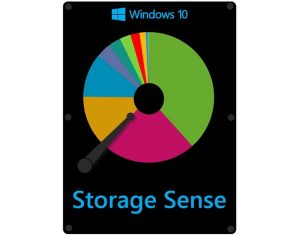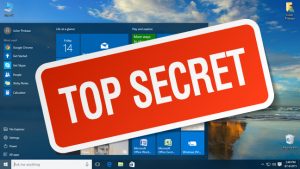|
The latest versions of Windows 10 are chock-full of handy new features that are worth exploring. Some will improve security or privacy. Others will save you time or trouble. Here are few tips and tricks you should know about if you’re using Windows 10… |
Windows 10: Did You Know…?
The Recycle Bin has been part of Windows since Windows 95. So you probably already know that when you delete a file or folder, it really doesn’t go away. Windows stashes it in the Recycle Bin, just in case it was an “oops” or you later decide you want it back. Similarly, Windows has a cache of temporary files that accumulate while your browse the Web. This enables you to quickly return to a web page without having to re-fetch all the text and images.
But both the Recycle Bin and the temp files can grow rather large over time. On a computer that’s short on hard drive space, this can be a problem. Storage Sense is a Windows 10 feature that empties your Recycle Bin and deletes temporary files automatically. To enable this handy feature, open Settings, then click on System, then click on Storage. Click the “Configure Storage Sense” link to enable the automatic cleanup options of your choosing.
Storage Sense will also show a report of how files are distributed across your hard drive. This can help you to quickly see which folders are using the most space, and identify possibilities for deleting large or unwanted files.

Dynamic Lock automatically locks your PC when a paired Bluetooth device moves out of range. To use this feature, you first need to pair your phone or another Bluetooth device that is usually on your person to the PC. Here’s how to do that:
- On your PC, go to Settings > Devices > Bluetooth & other devices.
- Turn on Bluetooth with the toggle switch. Enable Bluetooth on your phone, too.
- Click on the + sign, and in the pop-up “Add a device” window select “Bluetooth.”
- Choose your phone from the list that appears.
- Prompts will appear on both your PC and phone. Accept them to pair the two devices.
Now you’re ready to enable Dynamic Lock. Open Settings, select Accounts, then click on the Sign-in Options link in the left sidebar. Scroll down the next page to Dynamic Lock and check the box next to “Allow Windows to detect when you’re away and automatically lock the device.” That’s it! Unfortunately, there is no “Dynamic Unlock” feature as yet. You’ll need to manually unlock your PC when you return to it.
More Windows 10 Tips
Microsoft has frequently taken good ideas from the shareware world and incorporated them into Windows, much to the dismay of shareware developers. An example of this poaching of ideas is the “Night Light” feature in Windows 10; it’s a rip-off of the popular f.lux app.
The light from a PC’s screen can be hard on the eyes after sunset. The Night Light feature adjusts the display’s brightness and color to more soothing settings after dark, and restores daylight settings at sunrise or at a time you specify. To enable Night Light, type “night” in the Windows search box and select “Night Light” from the results. On the Display settings page, move Night Light’s slider control to “on.” Click on the “Night Light Settings” link to change how this feature behaves.
A host of automated troubleshooting tools are built into Windows 10. Type “troubleshoot” in the search box and select that word in the results to open a long page of troubleshooters for common and uncommon problems. Some of the most popular troubleshooters fix problems with Internet connections, network adapters, printer setups, and Windows Update.
In case you missed it, the April 2017 Creators Update (finally) included a built-in “print to PDF” option, eliminating the need for third-party PDF drivers. You can select this virtual printer from within any app that supports printing, and save the current document in PDF format.
Battery Saver mode is enabled by default in Windows 10. When your battery’s power level drops to 20%, the Battery Saver kicks in to stretch the remaining power as far as possible. It dims your display. It also prevents Universal Windows Apps from running in the background and receiving push notifications. You can tinker with Battery Saver settings by typing “battery” in the search box and selecting “Battery saver” from the results.
Have a great week from all of us at ZI
